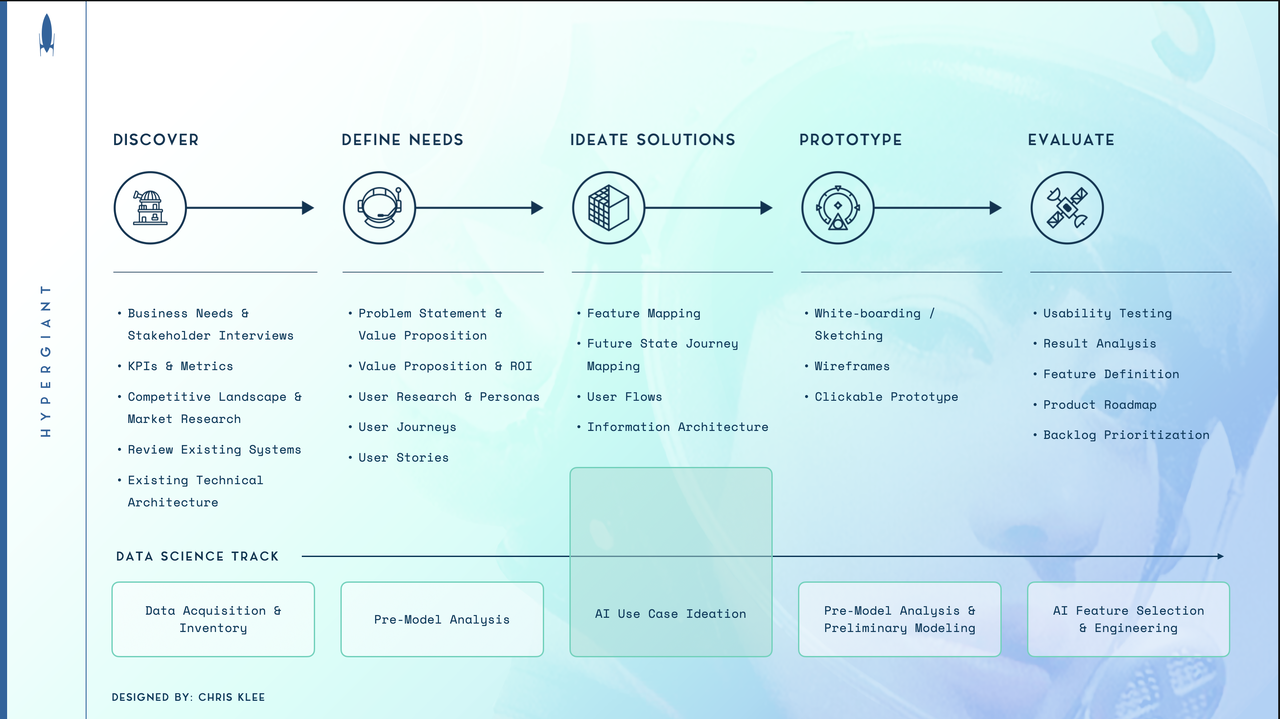Human-Centered AI: Insights From Microsoft's Design Leader

Table of Contents
Prioritizing User Needs in AI Design
Before even a single line of code is written, understanding user needs and behaviors is fundamental to creating effective and ethical AI systems. This requires a deep dive into user research, employing various methodologies to gain a comprehensive understanding of how people interact with technology and what their expectations are. Microsoft's approach to HCAI development leverages a multi-faceted research strategy:
- User Interviews: Directly engaging with users to gather detailed insights into their needs, pain points, and expectations.
- Surveys: Gathering quantitative data from a larger user base to identify trends and patterns.
- Usability Testing: Observing users as they interact with AI prototypes to identify areas for improvement and usability issues.
- Ethnographic Studies: Immersive research methods that allow researchers to understand users' behaviors in their natural environments.
Empathy plays a crucial role in this process. By truly understanding the user's perspective, designers can craft AI experiences that are intuitive, inclusive, and accessible to everyone, regardless of their technical skills or abilities. Microsoft products like the Seeing AI app, designed to help visually impaired individuals, exemplify this user-centric approach to AI design, showcasing their commitment to accessible AI and inclusive design.
Ensuring Transparency and Explainability in AI
Transparency and explainability are critical for building trust in AI systems. Explainable AI (XAI) focuses on making the decision-making processes of AI algorithms understandable to users. Microsoft's commitment to XAI involves:
- Providing clear explanations of AI recommendations: Users should understand the rationale behind AI-driven suggestions and actions.
- Allowing users to understand the rationale behind AI actions: This ensures users are not merely passive recipients of AI outputs but active participants in the process.
Opaque AI systems raise significant ethical concerns, potentially leading to a lack of user agency and trust. By promoting transparency, Microsoft aims to empower users and ensure they maintain control over their interactions with AI. Initiatives focused on promoting transparent AI, such as publicly available documentation explaining the workings of specific AI models, underscore their dedication to AI accountability.
Addressing Bias and Promoting Fairness in AI
Bias in AI algorithms is a significant challenge, potentially leading to unfair or discriminatory outcomes. Microsoft actively addresses this by implementing strategies to identify and mitigate bias throughout the AI development lifecycle:
- Data Curation Techniques: Carefully selecting and cleaning datasets to minimize the presence of biased information.
- Algorithmic Fairness Testing: Employing rigorous testing methods to identify and rectify biases within algorithms.
- Ongoing Monitoring and Evaluation: Continuously monitoring AI systems in real-world use to detect and address emerging biases.
Diverse and inclusive teams are essential to building fair and equitable AI systems. By bringing together individuals from diverse backgrounds and perspectives, Microsoft fosters a collaborative environment that challenges biases and promotes ethical AI development. The company's commitment to fair AI is evident in its efforts to address bias in specific AI applications, such as those used in recruitment and loan applications.
The Future of Human-Centered AI at Microsoft
Microsoft envisions a future where human-centered AI empowers individuals and enhances society as a whole. This vision includes:
- Personalized AI experiences: AI systems that adapt to individual needs and preferences.
- AI for social good: Leveraging AI to address pressing social challenges, such as climate change and healthcare disparities.
- AI for accessibility: Making technology more accessible to people with disabilities.
Microsoft is actively pursuing these goals through ongoing projects and collaborations, driving innovation in AI development. The company recognizes the crucial role of collaboration and partnerships in advancing the field of HCAI, working with researchers, developers, and policymakers to shape the future of AI responsibly.
Building a Better Future with Human-Centered AI
In conclusion, Microsoft's commitment to human-centered AI emphasizes the crucial importance of prioritizing user needs, transparency, fairness, and ethical considerations throughout the entire AI development lifecycle. By embracing these principles, Microsoft is not only creating innovative and useful AI systems but is also shaping a future where AI serves humanity responsibly. We urge you to learn more about Microsoft's commitment to HCAI and explore related resources to understand how you can embrace the principles of human-centric AI, user-centric AI, and responsible AI development in your own work, contributing to the creation of a more equitable and beneficial AI-powered future.

Featured Posts
-
 Microsofts Vision A Conversation With Their Design Chief On Ai And Human Creation
Apr 27, 2025
Microsofts Vision A Conversation With Their Design Chief On Ai And Human Creation
Apr 27, 2025 -
 Alaska Adventure Ariana Biermanns Romantic Escape
Apr 27, 2025
Alaska Adventure Ariana Biermanns Romantic Escape
Apr 27, 2025 -
 Forgotten Role Patrick Schwarzenegger In Ariana Grandes Music Video And White Lotus
Apr 27, 2025
Forgotten Role Patrick Schwarzenegger In Ariana Grandes Music Video And White Lotus
Apr 27, 2025 -
 Cma Cgm Strengthens Its Network With 440 Million Turkish Acquisition
Apr 27, 2025
Cma Cgm Strengthens Its Network With 440 Million Turkish Acquisition
Apr 27, 2025 -
 Bundestag Elections And Key Economic Figures Their Impact On The Dax
Apr 27, 2025
Bundestag Elections And Key Economic Figures Their Impact On The Dax
Apr 27, 2025
